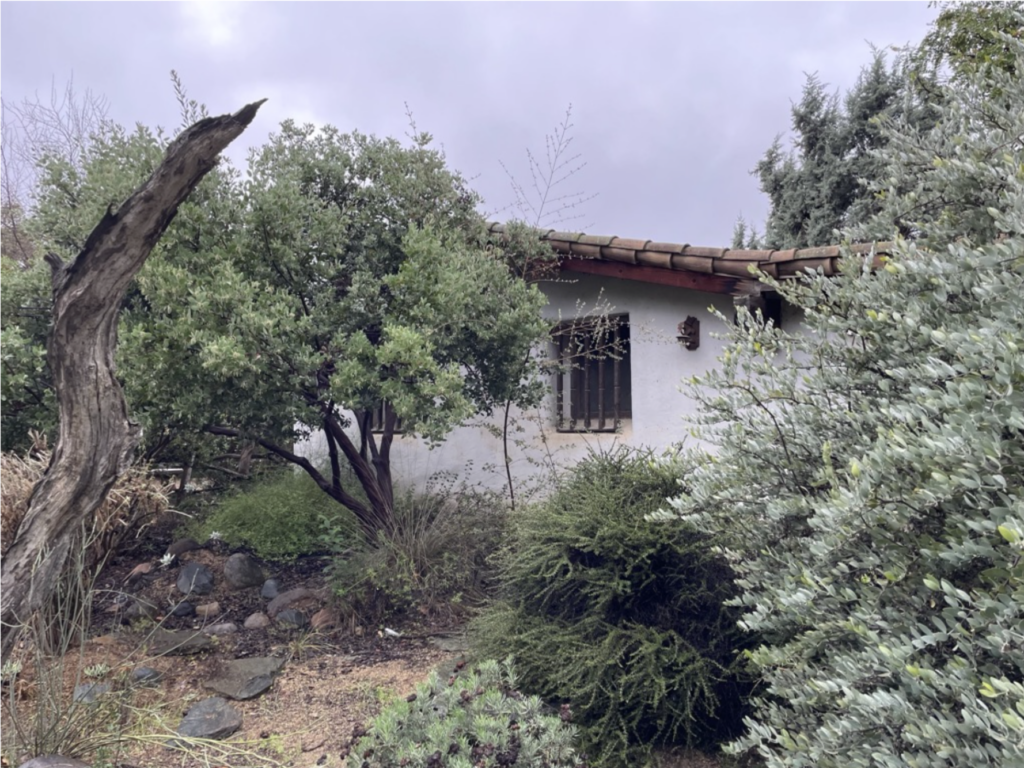
January in the Natural Garden
Happy New Year (according to the calendar). As you recall, we celebrated the Natural Garden New Year on October 1, and at this point, we’re well into the growing season. In the garden, the fall months of October and November are usually pretty busy. Regarding our winter, December is when the garden takes a rest, and January’s cold, wet time typically passes quickly in preparation for our spring months, February, March, and April. Since we always try to “garden ahead,” we’ll use this month to get ready for spring.
Current events, history, review, and notes
We’re off to a good start. With nearly 8” in the gauge for the season, we can compare (at least for the present moment) with the 2019-20 rain year. That year, it kept raining through spring, and we totaled 18.50”, which is well above our 12” average and made everything wonderfully green. Unfortunately, the following two years were very dry, with extremely hot summers. Let’s hope we get consistent rains now through April so our groundwater, soil moisture, natural areas, gardens, and nursery crops can celebrate, and hopefully, next summer, we’ll look back on what was “a wet year.” One storm at a time… the gates are open, keep coming in… please.
Watering
A well known fact, natural gardens thrive for most of the year on rainfall alone, especially when rainfall amounts are “normal” or above. Fortunately, this is what we’re seeing so far this year.
Related to Watering
All sorts of potted plants benefit enormously from these rains. Our tap water contains dissolved salts, (especially our summer supply), which build up in root balls and garden soils over time. Rainfall (which is pure) leaches the salts out of pots, and in garden soils, they are diluted and driven down deep.
Note: one reason properly watered native plants do not suffer as much salt damage as many common landscape plants is simply because they get less water overall, and when they do get water, it’s provided in a Deep Soak.
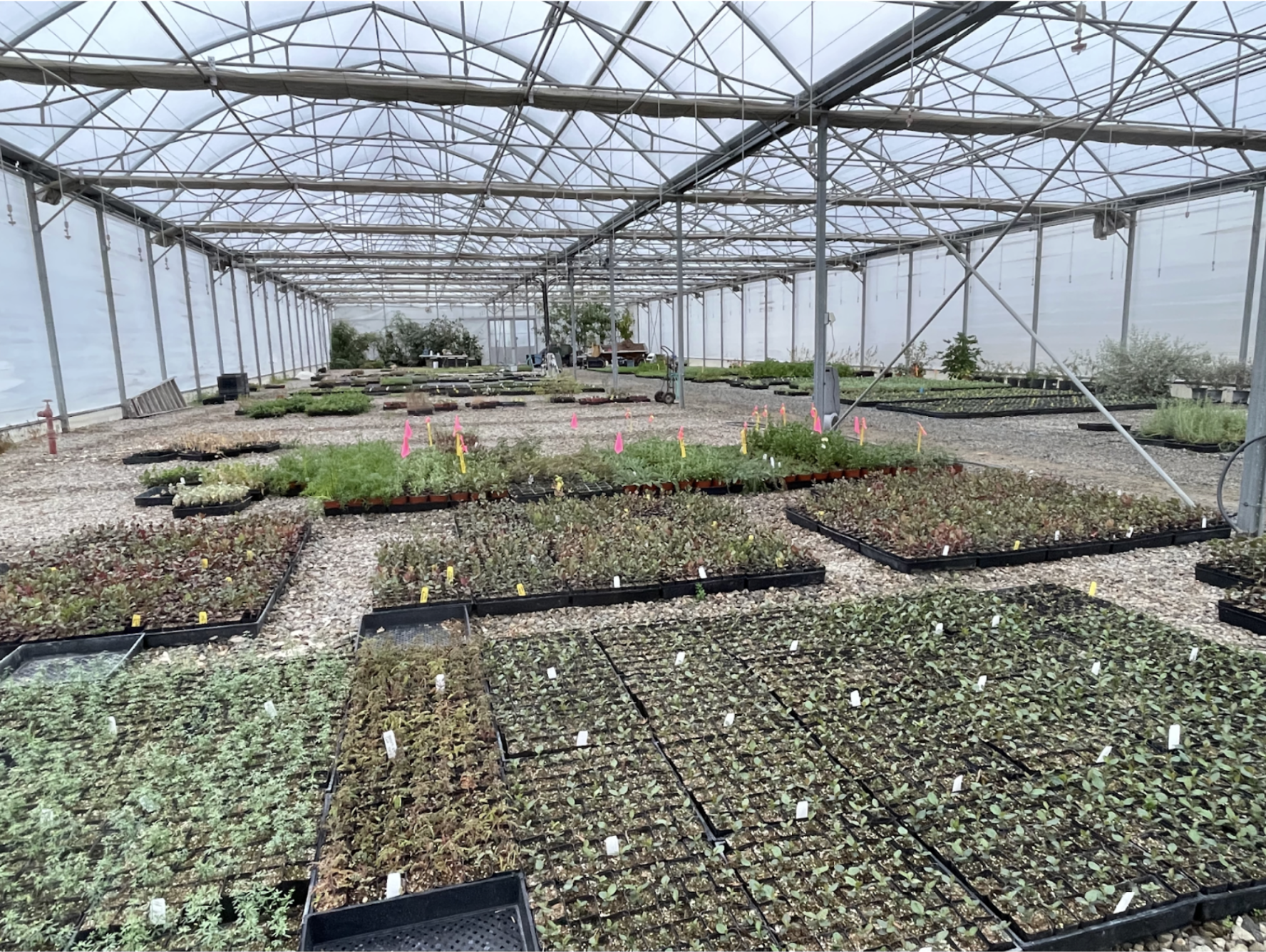
Pruning
Typically all pruning should be done in the fall. If you missed any, you could still get it done now, but be careful not to cut spring flowers off the shrubs. In many cases, it is better to wait until they finish blooming and then hit them in May, an excellent month for thinning and shaping.
Weeding
Uh-oh, here’s one that’s current. Lots of little seedlings, some of which you may not have seen for a year or more. Needless to say, get them while they’re young. Tiny weeds are easy, and big weeds are tough. Your weed’s best friend would be your bad habit of procrastinating everything.
Mulching/Top Dress
Look how the soil is accumulating such natural beauty under every plant! Manzanita flowers lay silently and appear as fallen snow. Leaves from various trees and shrubs carpet the ground and congregate in spots where they retain precious moisture. Even the sound of your footsteps on the “leaf litter” is beautiful. This is how nature “mulches” her own planting areas.
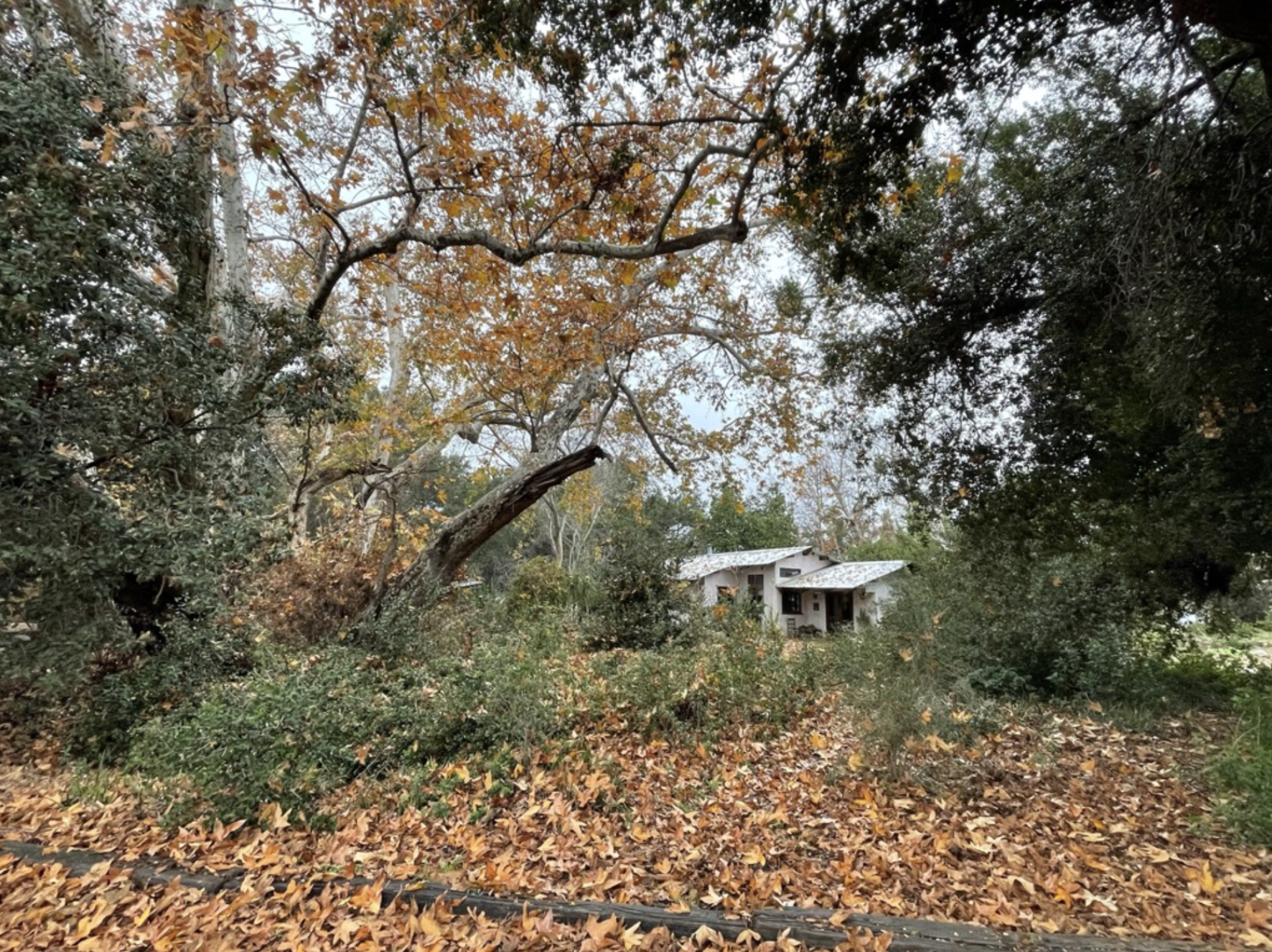
Feeding
The soil is a bit too cold for fertilizers to have much effect. The next window will be mid to late spring, so be patient. Besides, nothing beats rain for greening up native plants, so we’re covered for now.
Troubleshooting – Varmints, Pests, and Diseases
A few of the disease potentials from last month may still be apparent, so watch for powdery and downy mildews and see DECEMBER 2022 in the Natural Garden for more details. With these nice rains, many signs and symptoms of problems from last summer are still resolving as we speak. If you have a diseased plant that has been suffering since last summer, the problem may be embedded in the plant’s entire system, and you’ll need to get an accurate diagnosis for treatment.
Injurious insect pests are relatively inactive in cold weather, but see last month’s newsletter for more information. Send questions and pictures on all plant health issues, and we will try to help.
Annual Wildflowers
Create your own super bloom! If you sowed seed last fall, you should already be seeing nice growth, and you can expect flowers in a few short weeks. You can still sow seeds now, but they will be getting a late start, and some species will not get very big or bloom for very long. Also, we have a few wildflower species in 4” pots, ready for you to pop into those bare spaces where you want some spring color. Come on over.

Adding New Plants
One of the certain joys of planting in winter is that in the process, you get good and dirty, even filthy with mud. It’s a great way to connect to the earth, just ask any kid. Come on over. We have new plant species coming available every week.
Phytophilia
Literally translated as “brotherly love of plants,” this section in our monthly newsletter specifically addresses the “sixth sense” we develop in our relationship with plants in general and specifically with plants in our gardens. This month, I think the roots are calling out for some recognition. For months (two years), they have been surviving in dry soils. Even in garden spaces, I believed I had been watering properly, I could dig a hole to put in a new plant and find the soil extremely dry. Now with these soaking rains, roots are beginning to thrive. And the shoots, flowers, fruits, and seeds will soon show how they benefit from all this underground exuberance.
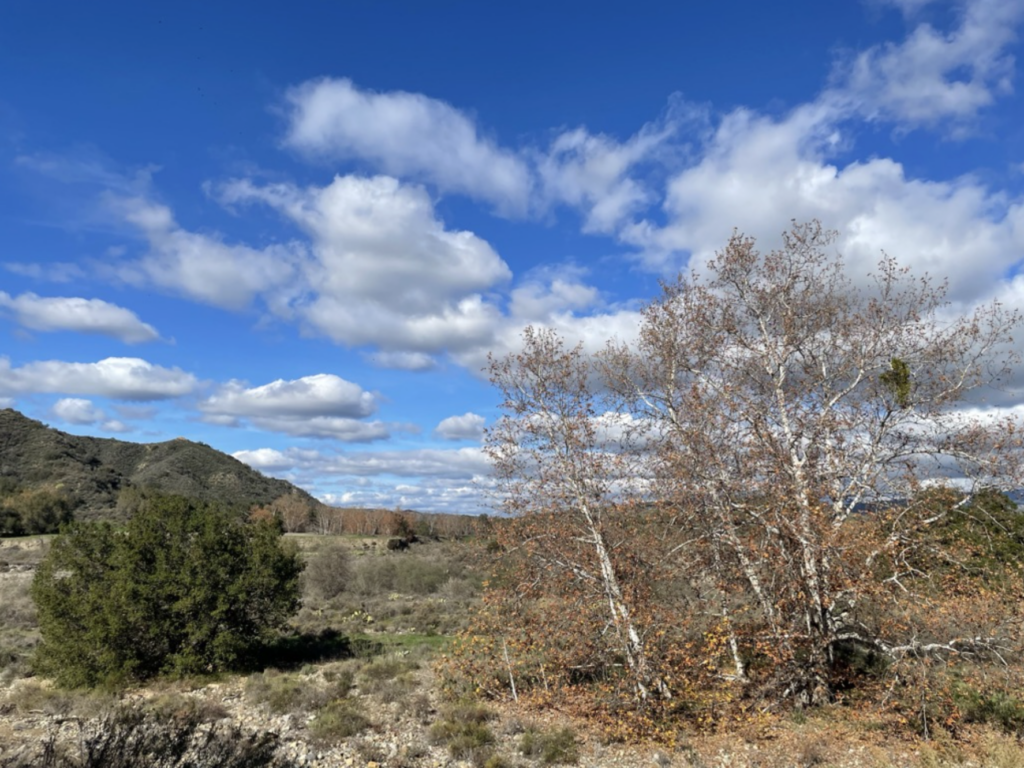
Important Review
If it keeps raining, we’re in for a good year
If it stops raining, we will be well below average by the end of the season
Rainwater is pure, diluting and removing accumulated salts in the soil
Prune now if you missed fall pruning, otherwise, wait till May
Get weeds out while they’re small and easy to pull
Let the plants mulch themselves
No fertilizer is needed in winter
Watch cultural conditions to prevent plant disease
Plant seeds and new plants anytime
Roots are what’s happening
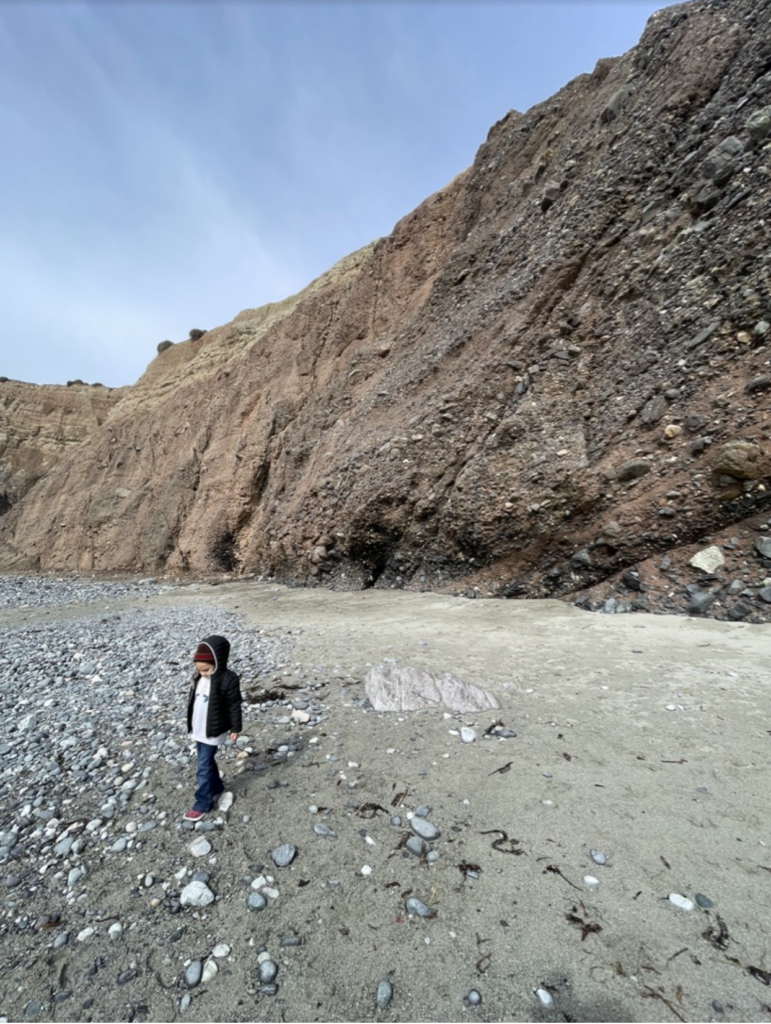
Engage
Somewhere I read that in order for an outing to be a true “adventure,” it has to include a certain element of risk, even some level of danger. It’s why running over and over at low tide on wet sand, escaping each oncoming lap of the ocean, with a three year old, is an adventure. She might get wet up to her ankles, and she shrieks with delight with each wave, feet wet or dry.
Without risking life and limb, (unless you’re into that kind of thing), it’s good for us to stretch our limits from time to time, to take calculated risks and come out on top, or to get caught by the dangerous thing and be not the worse for it. I have never jumped off a cliff on a hang glider. That risk is too great for me, and I would not get any thrill even if I landed safely. But the times I have hiked in heavy rain, or made it back to my truck after dark, or gone a longer distance than I thought I could, or taken a new and doubtful route only to discover unseen treasures, have all been worth it. I learned.
We tell our kids to experiment, to try new stuff, to just go for it. We watch them learn from their successes and failures. Then we grow up and play it safe. Why? We don’t have to.
I think that when we explore nature, we should sometimes seek adventure in the true sense of the word. It will always lead to discovery and growth.
Hey, it’s a new calendar year! Let’s start makin’ it!
From the JANUARY Natural Garden,
Mike Evans
Questions? Help is just one call or one email away. Call (949) 728-0685 or email (with pictures if you like) our special helpline: gardenhelp@californianativeplants.com